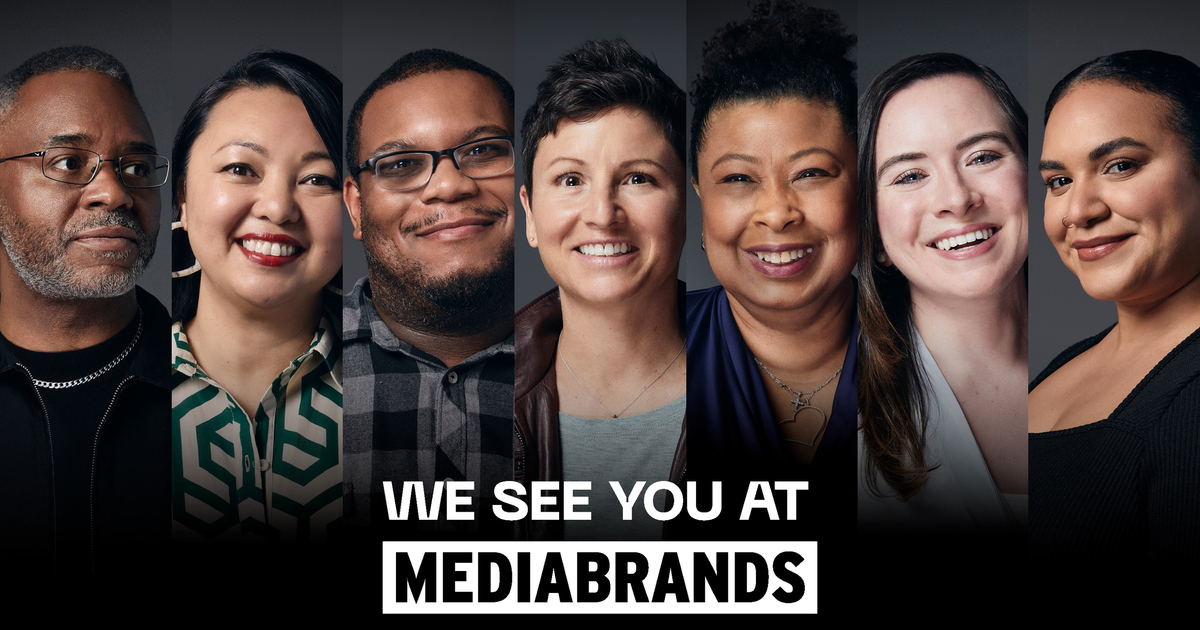How Mediabrands is recruiting DE&I talent through social media
"We See You" social media push aims to attract talent from non-traditional and underrepresented backgrounds to the media agency network.

Mediabrands is launching a talent recruitment campaign for a new client: Mediabrands.
The Interpublic Group of Cos. network is taking a consumer marketing-style approach, using social media and digital video, in an effort to lure talent from non-advertising fields and "historically excluded groups," according to the agency. The effort, titled “We See You at Mediabrands,” begins running this week on TikTok, Snapchat, YouTube, Google with a series of 2-minute and 15-second videos that showcase the personal and professional stories of Mediabrands’ employees at UM and its other brands. Alongside these personal videos, the campaign features graphics-driven videos that highlight the media careers available within the company.
The ad push is notable in an industry that puts most of its focus on promoting clients rather than itself. But Hermon Ghermay, Mediabrands’ global chief culture officer, said that when the company was looking to recruit prospective employees without a traditional creative background, they decided to treat the process as if they were working for a client. “We are uniquely positioned to use the same strategies, tools and resources that we use to build our clients’ businesses to help address the challenge of attracting new people, and especially those from historically excluded groups, in a tight talent market,” Ghermay said.
Creating a safe space
The resulting videos stand out from dry recruitment ads with a series of personal interviews of Mediabrands’ employees whose career trajectories began outside media companies. In the two-minute-long video of Jim DeBarros, for example, the Mediabrands Content Studio’s executive VP and group creative director described his creative career, which began in the entertainment industry. He recalled initially joining Mediabrands' UM because he needed more personal time following his mother’s diagnosis of dementia and said he felt supported by his current employer. He added that following the murder of George Floyd, Mediabrands’ Black leadership quickly “used it as an opportunity to reach out to all of the Black individuals, working to create a safe space.”
“We were privileged to interview so many people for this campaign,” said DeBarros, who also serves as the creative director on the effort. “People of a certain age coming back to work for the first time in a couple of years who were not sure if they have the necessary skills and if their experiences would have value, and were pleasantly surprised that their experiences did have value; People who, for the lack of a better term, were bullied in their workplace elsewhere because they were LGBTQ and were made to feel unwelcomed, and discovered that [at Mediabrands], they could be their whole self. Every story was illuminating in different ways about the culture of inclusivity, about [the employees] not just wanting to be here, but thriving here.”
DeBarros said there is a practical reason for the campaign. “A lot of People [of Color] simply don't know [about the creative industry],” he said, “I didn’t know before I started there. I knew about advertising, but I didn’t know about the other sides of the business. It’s just a matter of exposure.”
Social media was a logical choice, said Ghermay, for “meeting people where they are”—for the "We See You" campaign. “There’s a very intentional choice of picking a video-form platform,” she said, “and then be part of conversations. The way we think about work and career has blurred so much that, [for topics like] who we are, how we interact, it’s not compartmentalized anymore … We intentionally wanted to talk to and try to reach people who have all of the amazing raw skills needed to be successful in this industry, but may not have the practical experience or the knowledge … Instead of expecting them to find out about us, we’re trying to go to them.”
Support network
After acquiring talent from traditionally underrepresented backgrounds, Mediabrands will implement mentorship programs to keep them. “[We want to] make sure there’s a support network, there’s education, formal and informal on the job, and there’s a sense of safety and belonging,” she said, to give people “access and visibility to navigate this industry."
Ghermay said that the "We See You" strategy was to show respective candidates that Mediabrands is focused on “both representation and inclusion," and live up to it. "Do we have the right culture that’s actually going to allow them to be successful? That’s an important part of the equation, and that’s the hard work. We got to look inside at individual leaders and organizations, and question our assumptions, norms, behaviors.
The Mediabrands campaign comes as agencies struggle to hire fresh talent that will allow for more diversity of thought.
“Across the board, recruiting is difficult in this day and age,” said Debra Sercy, managing partner at Grace Blue, who applauded the idea of using consumer marketing techniques to reach people without a traditional creative background. A campaign of this kind deserves a “huge ‘thank you’,” she said, “because the investment in this campaign will benefit the entire industry.”

 MikeTyes
MikeTyes 
























.jpg&h=630&w=1200&q=100&v=f776164e2b&c=1)






